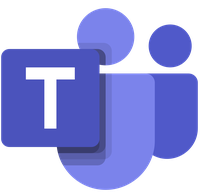Encourage Communication and Cooperation (Collaboration)
 |
Various e-learning tools can be helpful in promoting communication and cooperation between students. This page is constantly growing with the project and is regularly filled with new content. Unless otherwise stated, the following sources are valid: e-teaching.org • ilias.uni-giessen.de/ilias |
|---|---|
 |
Chat Chats can be used to work synchronously in plenary sessions and small groups and are suitable for student support and discussions. During an online consultation, you usually have a one-on-one chat with a student. But you can also chat with a group of students, for example to supervise a project work of a team. From a university didactic perspective, chats are an interesting communication medium. The chat function in ILIAS at JLU Giessen is currently deactivated! |
 |
E-Mail & Mailing lists E-mail is one of the most frequently used services on the Internet and also plays an important part in everyday university life. Communication via e-mail offers advantages in terms of time and space flexibility, but it should be noted that with a large number of students to be supervised, a high level of workload can be incurred for the lecturer. A mailing list can be used in courses for information and discussion. This means that participants can easily be informed of changes in dates or venues, current information, event tips and the like. |
 |
Online forum A forum is a messaging or discussion area for asynchronous communication in which users can participate in discussions. In a forum, students can debate topics either set by themselves or assigned by the organizer. The use of a web-based discussion forum offers additional flexibility with regard to the time coordination of the discussion. Get to know and use the forums integrated in Stud.IP and ILIAS. |
|
Blog/Weblog Weblogs (also called blogs) are often characterized as "online (learning) diaries". Visitors to a weblog often have the opportunity to comment on the contributions and link to other blogs or content. Weblogs can be used as an alternative tool for performance reports. Teachers can thus better understand the learning process of the students. You can integrate weblogs into your teaching by using the weblog function in ILIAS. Available with English subtitles. |
|
 |
E-Peer-Feedback In a learning module on electronically supported peer assessment and peer feedback procedures, you will receive an overview of functions and application scenarios. Learn more about how to set up anonymous peer feedback in ILIAS and use it for your teaching. |
 |
Tablets Since smartphones, tablets and notebooks have become affordable, highly available and a mostly self-evident (work) medium, they are also increasingly seen in courses. If you are interested in using tablets, are planning to use tablets or are already using tablets in teaching, Mr. Stefan Hentschel will be happy to answer your questions or offer advice. Web based trainings for data exchange on tablets or the wireless transfer of screen contents in the university network can be found on the ILIAS page of JLU. |
 |
Video-/Webconferences In contrast to text-based communication, audiovisual support of a virtual communication system by using video conferencing systems offers additional information through the facial expressions and gestures of the other party. With video or web conferences, for example, you can organize courses at separate locations. When selecting a specific video conferencing system, various technical questions have to be considered. The Adobe Connect web conferencing system can be used to implement web conferences, auditorium broadcasts and live streaming.
The JLU provides you with the following tools for teaching purposes. Please note that the tools "Cisco Webex" and "Office 365 Education / Teams (A1)" should not be used in the context of research activities.
Further information on synchronized tools for communication and collaboration can be found on the website of the University Computing Center.
|
 |
Cisco Webex Meetings & Events Meetings (Meetings) With Webex Meetings you can hold meetings but also seminars. Every participant of a meeting can transfer his picture and sound into a meeting. There is a chat, the possibility to transfer his screen and to make annotations.
Events (Lectures, participants only listen, less interaction) With Webex Events you can realize large events (e.g. lectures). One lecturer presents and up to 1,000 students can "listen". It is not possible for students to join in via audio and video for events. However, there is a feedback channel in the form of a chat, multiple-choice questions can be asked and feedback buttons can be used.
|
 |
Microsoft Teams With Microsoft Office 365 Education, online Office documents (Word, PowerPoint, Excel) can be edited online, not only alone but also in a team. The "Teams" function is also available in Microsoft Office 365 and includes chat, video conferencing and data exchange. A combination of synchronous and asynchronous communication is thus possible. There are Apps Teams for mobile devices. MS Teams is recommended for event formats with up to 50 participants. Via the channel function, so-called break-out rooms for e.g. group work can be realized.
|
|
Wikis Wikis are common, easy-to-use content management systems that enable content to be published on the Internet that can be edited by a large number of users. You can integrate wikis into your teaching using ILIAS and/or Stud.IP. Source: docs.studip.de Available with English subtitles. |
|
|
JLU-Box The Justus Liebig University offers its employees and students an alternative to Dropbox and other cloud storage services: The JLUbox. |
|
